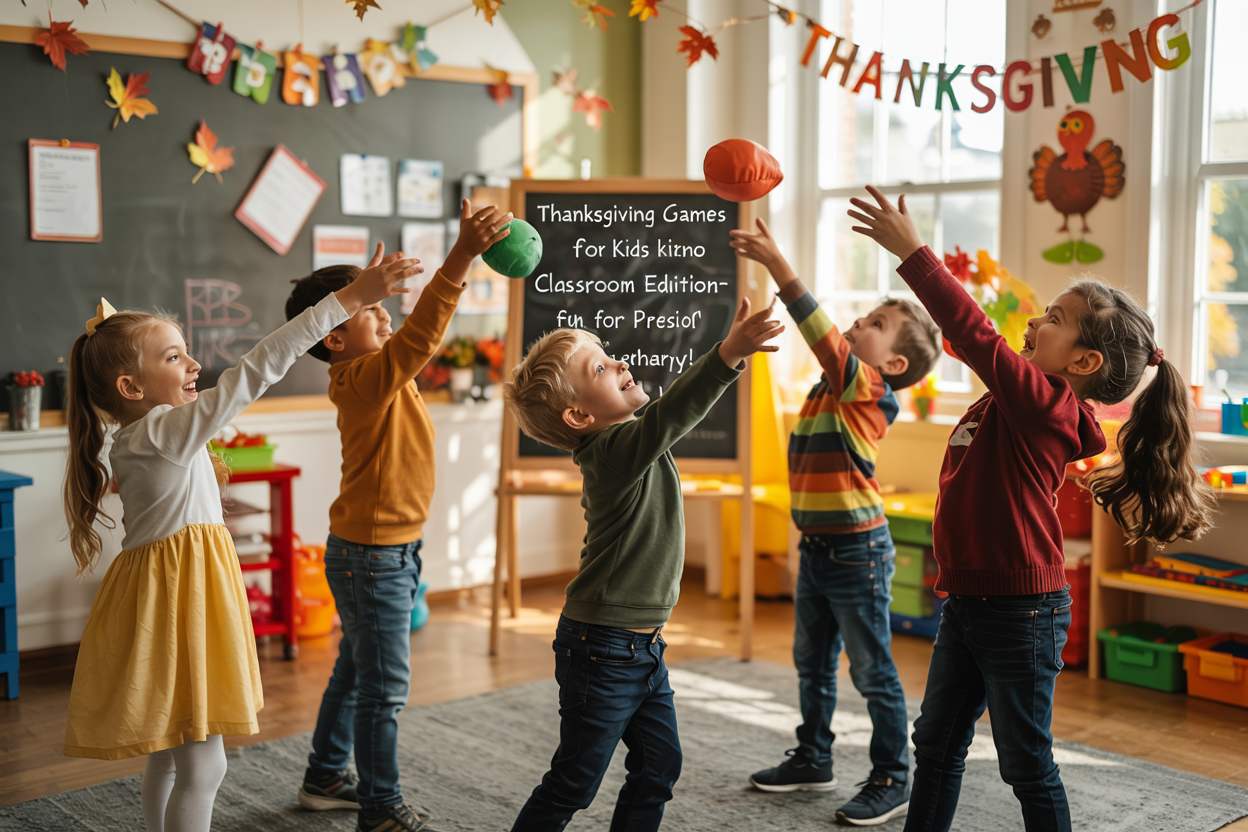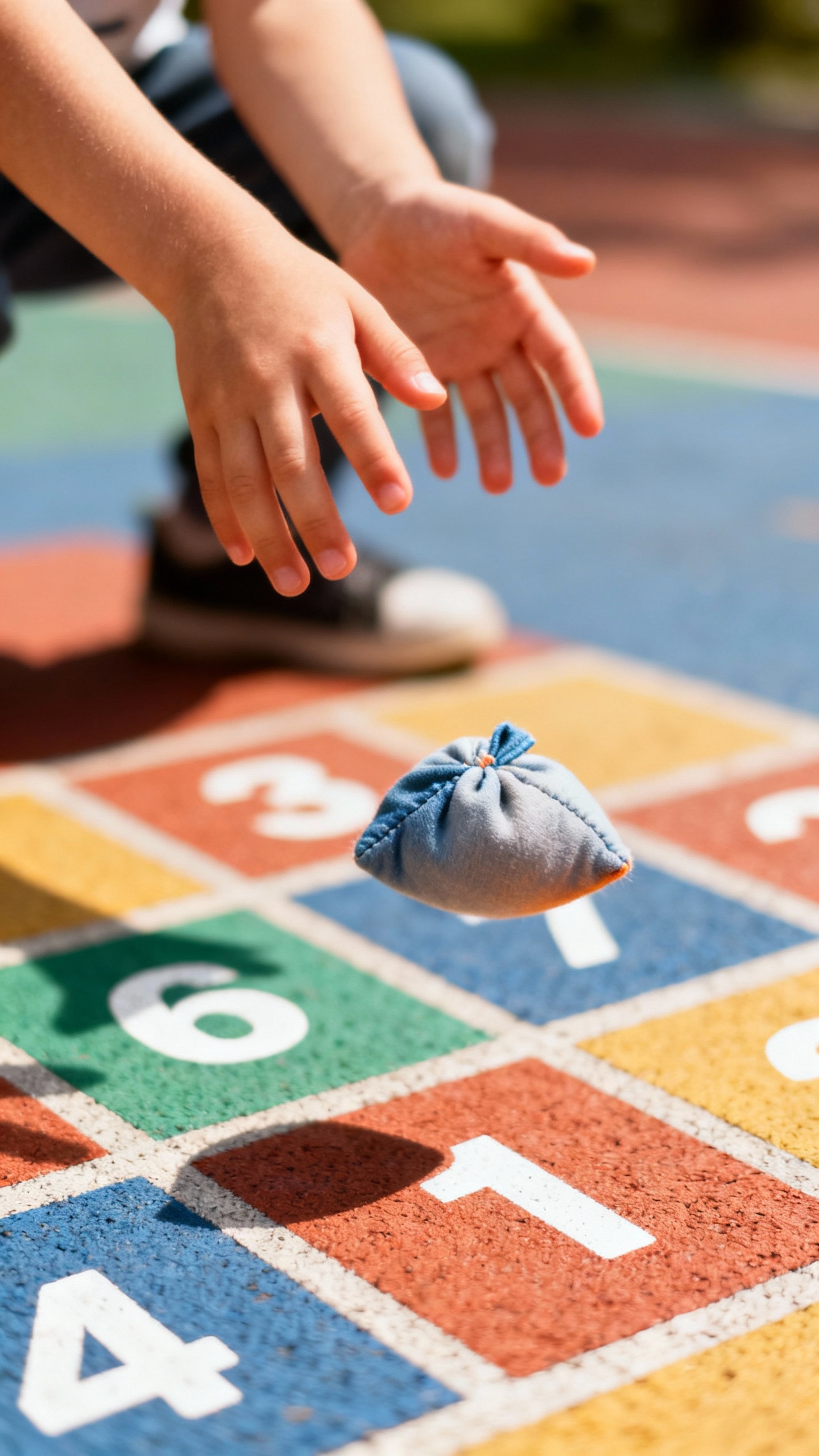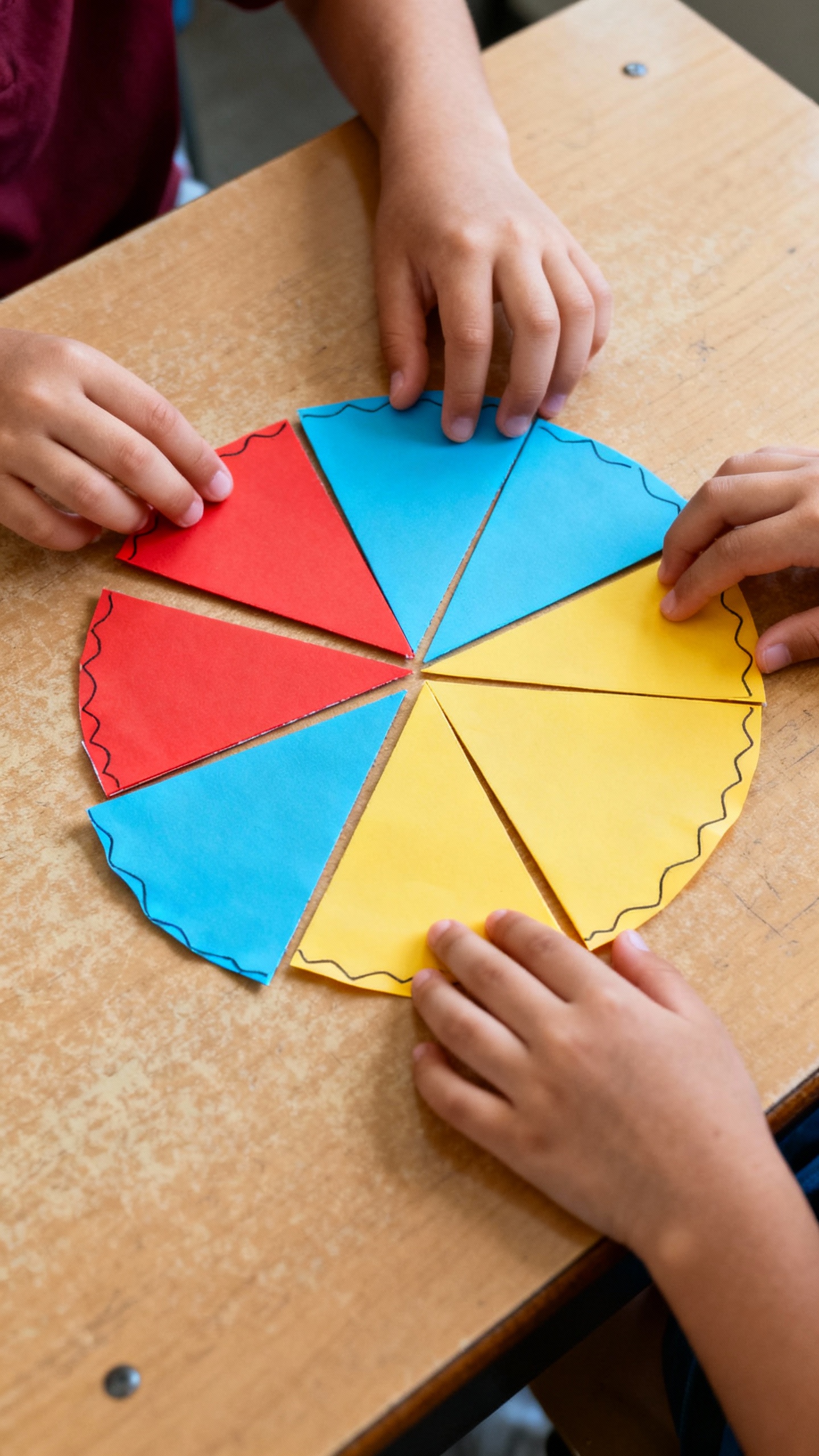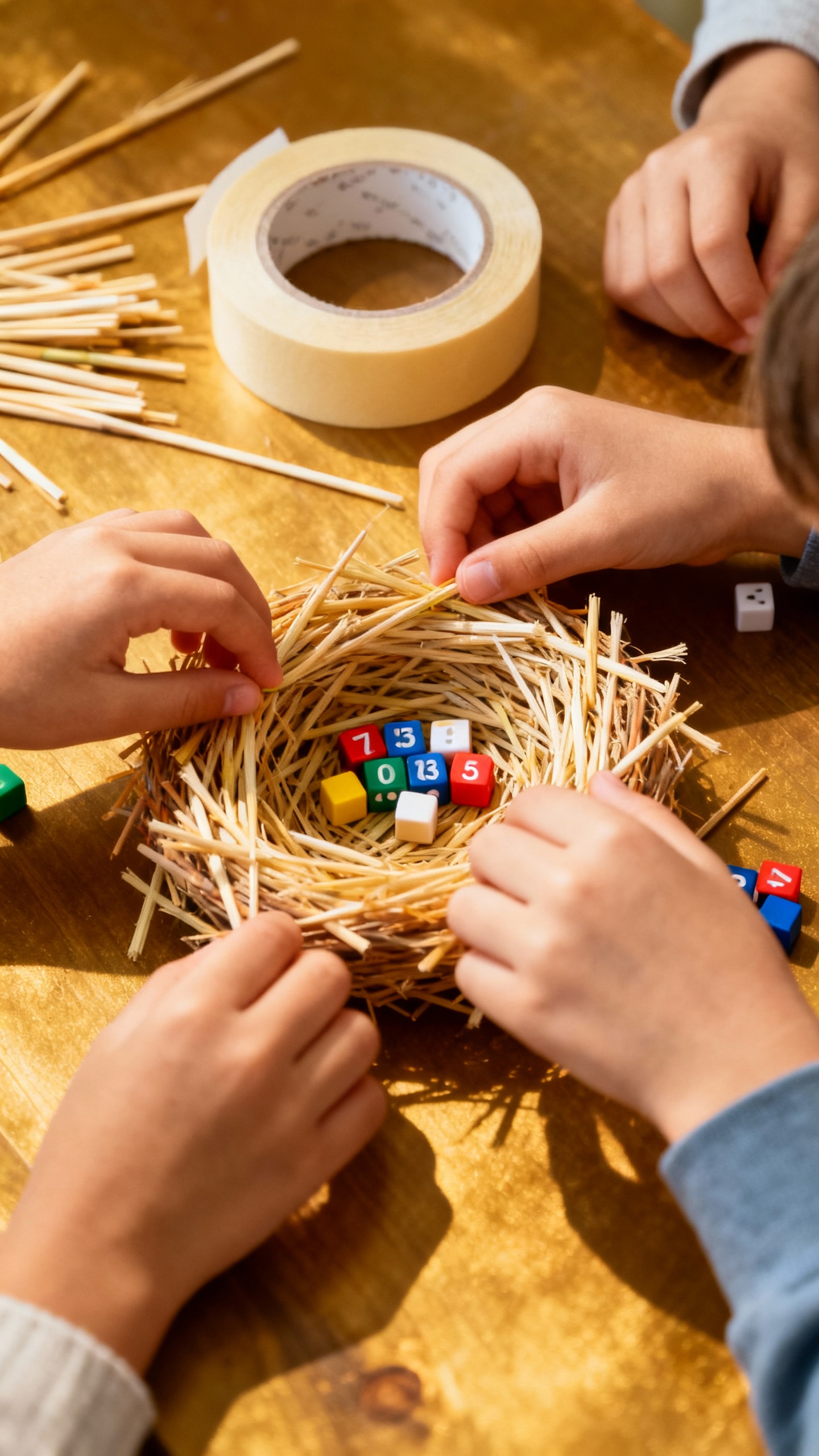Thanksgiving in the classroom doesn’t need a sugar crash or a pile of glitter. You can bring the fun, learning, and turkey vibes with simple games that work for real classrooms and real time limits. Want activities that keep preschoolers giggling and elementary kids thinking?
You’re in the right place. Grab some paper, a handful of crayons, and let’s make November awesome.
Quick-Prep Games That Don’t Eat Your Prep Time
Sometimes you’ve got five minutes and 24 squirmy kids. These games deliver instant win with almost zero setup.
- Turkey Freeze Dance: Play music, kids dance like turkeys.
Pause the music, everyone freezes in a silly pose. Add challenges: freeze like a pumpkin, a slice of pie, a grumpy pilgrim. Great for preschool and K-2.
- Gratitude Hot Potato: Pass a ball while music plays.
When it stops, the holder shares one thing they’re thankful for. Older kids can name a person plus a reason. FYI, this doubles as a speaking-and-listening exercise.
- Gobble, Gobble, Goose: Yes, it’s just Duck, Duck, Goose.
Rename it. Seasonal rebrand = instant excitement. Add a rule: when tagged, players must “gobble” on their lap run.It’s goofy and glorious.
- Thankful Toss: Use a soft ball. Call out a category before each toss (food, person, place). Catchers say a thankful item in that category.
Quick, safe, and zero laminate required.
Team Challenges That Build Brains (and Cooperation)
Group games help kids collaborate without drama. Well, less drama. Here are teamwork wins for K-5.
- Pumpkin Patch Relay: Use orange balloons or paper balls as “pumpkins.” Teams race to move pumpkins from one side of the room to the other using spoons or elbows—no hands!
Add math cards at the finish that teams must solve to keep their pumpkins.
- Feather Engineering: Give teams straws, tape, and paper. Challenge: build a turkey “nest” that holds the most counting cubes. Test, iterate, cheer.
You just did STEM with holiday flair.
- Cranberry Code: Set stations with clues disguised as riddles or vocabulary. Each solved clue gives a letter. Letters form a Thanksgiving word (HARVEST, GRATITUDE).
Early finishers design a bonus clue for the next group.
Teacher Tip: Roles Make It Smooth
- Leader: reads instructions
- Materials Manager: retrieves and returns supplies
- Recorder: writes answers
- Reporter: shares out
Switch roles each round to keep it fair and reduce the “I never get a turn!” chorus.
Literacy Games With a Side of Laughter
Reading in November doesn’t need to feel like a worksheet disguised as a turkey. These options hit standards and still feel like play.
- Turkey Tale Mix-Up: Write simple story parts on cards: characters, setting, problem, solution. Kids draw one from each stack and build a mini-tale.
Preschoolers can draw pictures; older kids write and read aloud.
- Feast of Words: Create a “menu” of vocabulary appetizers (synonyms), entrees (context sentences), and desserts (funny idioms). Students “order” by completing tasks. IMO, turning vocab into food-themed choices is chef’s kiss.
- Gratitude Alphabet: Work together to list things they’re thankful for from A to Z.
Let partners handle tricky letters like X (“xylophone music at assemblies” counts, promise).
For Emergent Readers
- Picture-Word Match: Turkey, pie, corn, leaf. Match picture cards to word cards. Add a movement: when you match, do three “gobbles.”
- Sound Hunt: Hide letter cards.
Kids find one that matches the beginning sound of a Thanksgiving picture you hold up.
Math Games That Feel Like Recess
Yes, math can be fun. No, you don’t need a cart of manipulatives. Try these quick wins.
- Turkey Tally Toss: Tape numbers 1–10 (or 10–100) on the floor.
Students toss a beanbag, read the number, and complete a task: clap that many times, or add 10, or multiply by 2. Differentiate by group.
- Pie Slice Fractions: Use paper circles with lines for halves, thirds, fourths, eighths. Students assemble a “pie” to match fraction cards.
Bonus: have them draw the matching decimal on a sticky note for grades 3–5.
- Corn Kernel Count-Up: Put dried beans in cups. Students estimate, then count or group by 2s/5s/10s. Older kids create and solve each other’s multi-step word problems using their bean counts.
Fast Finishers
- Thankful Arrays: Draw arrays with mini leaf stickers.
Write the multiplication fact underneath.
- Feast Budget: Give a $10 pretend budget and a simple price list. Students “buy” items and show change strategies.
Creative Crafts That Double as Games
You want art, but you also want structure. These craftivities hit both.
- Roll-a-Turkey: Students roll a die to add parts to a turkey (eyes, feathers, patterns).
Add rules for symmetry or patterns for older grades. When finished, partners describe their turkeys using adjectives.
- Thankful Feathers Gallery Walk: Each student writes gratitude on a feather. Assemble class turkeys and do a gallery walk.
Students leave sticky-note compliments using sentence frames.
- Leaf Logic Puzzles: Cut paper leaves into simple tangram-style pieces. Kids race to reassemble. Time them and let them try to beat their records.
Keep It Clean(ish)
- Skip glitter.
Your custodian will thank you.
- Use glue sticks instead of liquid glue.
- Pre-cut shapes for preschoolers to save time (and sanity).
Movement Games for Indoor Energy Burn
Rainy day? No problem. Let them move safely without turning the classroom into a parkour course.
- Pilgrim Path Obstacle: Tape lines on the floor to hop/heel-to-toe along.
Add stations: balance a “pumpkin” beanbag on your head, do five “harvest” squats, flap like a turkey for eight counts.
- Harvest Bingo: Make bingo boards with movement prompts (stretch like taffy, tiptoe through the pumpkin patch). Call movements instead of numbers. Everyone wins a deep breath.
- Silent Cornfield: Students move from one side of the room to the other without making a sound.
If you hear noise, back one step. Sneaky way to reset the room’s energy.
Calm-Down and Mindful Moments
Not every game needs volume. Sprinkle in quiet activities to keep the day balanced.
- Gratitude Pass: Sit in a circle.
Pass a plush turkey. When you hold it, share one small thing you appreciated today. Model specific examples: “a friend sharing a green crayon.”
- Color-and-Chat: Hand out simple coloring sheets.
Play soft music. Students can whisper about their favorite holiday foods. It’s low-lift and magical after high-energy games.
- Five Senses of Fall: List one thing they can see, hear, smell, taste, and feel in autumn.
Turn it into a quick poem for older students.
Game Adaptations for Preschool vs. Elementary
Same idea, different expectations. Here’s how to adjust without reinventing the wheel.
- Preschool: Keep instructions to one step.
Focus on movement, matching, and simple naming. Use big visuals and short rounds.
- K–2: Add two-step directions. Include counting, simple writing, and partner talk.
Keep materials large and sturdy.
- Grades 3–5: Layer in strategy, math operations, writing prompts, and leadership roles. Give them choices and watch engagement skyrocket, IMO.
FAQ
How do I manage noise with active games?
Set a “volume goal” and a quick signal upfront. Use a call-and-response, a chime, or lights dimmed.
Time rounds to keep momentum, and pause immediately when noise climbs. Praise groups that reset fast. Clear expectations beat constant reminders.
What if I have limited space?
Shrink the playing area and rotate groups.
Use aisles as lanes, desks as station markers, and tape for boundaries. Many games swap easily to table-top versions—think mini relays with finger puppets or card tasks instead of running.
How do I include students with mobility or sensory needs?
Offer role choices: timer, clue reader, scorekeeper, or designer. Provide visual schedules, noise-reducing headphones, and alternative movements (chair marches instead of jumps).
Build in opt-in touch and clear visuals. Inclusion works best when you normalize options for everyone.
Can I make these academic without killing the fun?
Absolutely. Add quick content cards to almost anything: math facts at relay checkpoints, vocab on feathers, reading clues in scavenger hunts.
Keep the game mechanics simple so the learning stands out. Kids feel the play, you see the standards. Win-win.
What supplies do I really need?
Go minimal: paper, markers, tape, a ball, sticky notes, and a few dice.
Optional glow-ups include beanbags, balloons, and laminated cards, but you don’t need them. Creativity beats fancy materials every time, FYI.
How long should each game last?
Short and sweet works best: 5–10 minutes for quick bursts, 15–20 for team challenges. Stop while they still want more.
You can always bring it back tomorrow.
Wrap-Up: Make November Joyful
You don’t need elaborate props or hours of prep to make Thanksgiving season sparkle in your classroom. Mix quick games, teamwork challenges, and calm moments to keep kids engaged and learning. Try one or two today, add a couple next week, and boom—new traditions.
Gobble on, teacher friend.






